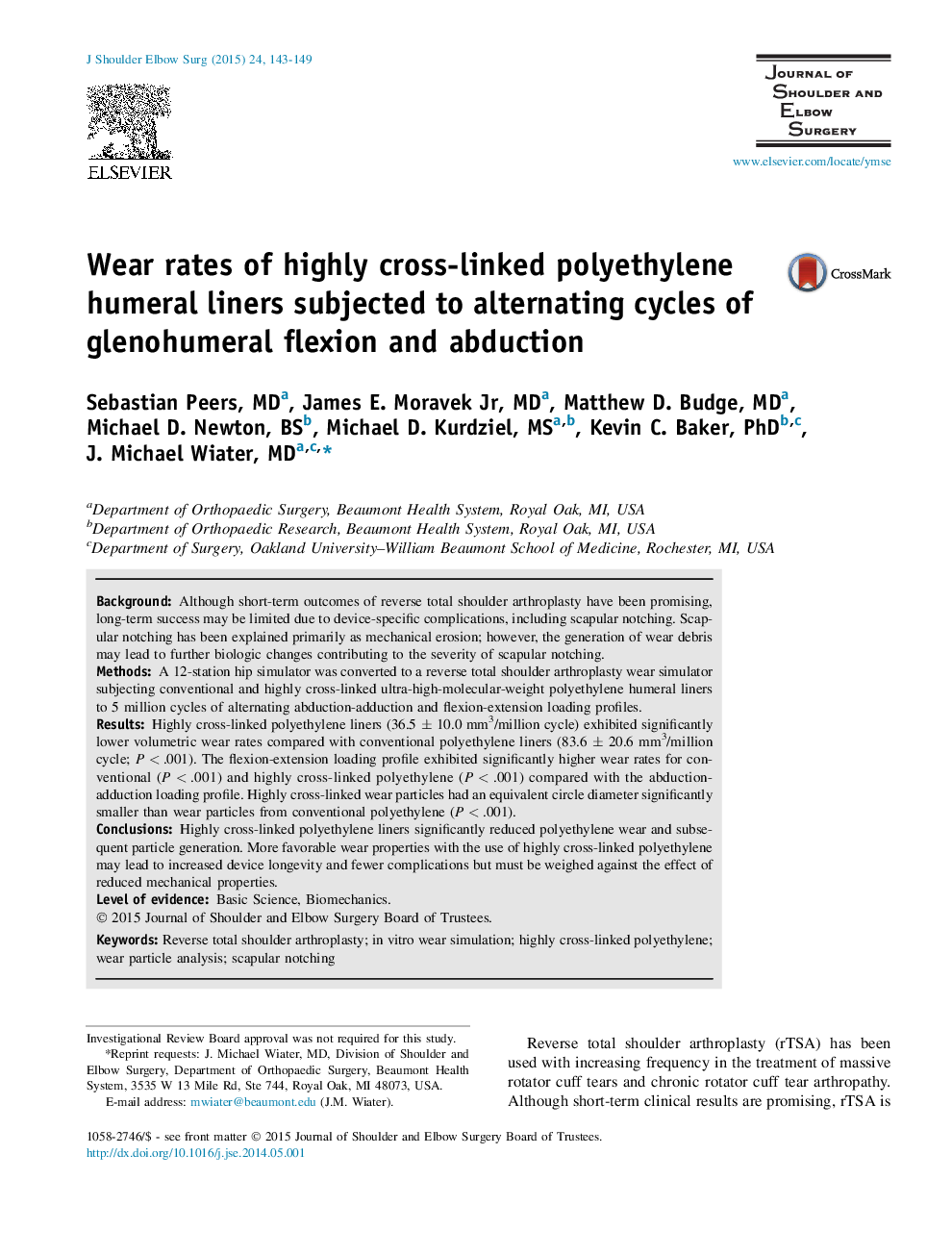| Article ID | Journal | Published Year | Pages | File Type |
|---|---|---|---|---|
| 4073815 | Journal of Shoulder and Elbow Surgery | 2015 | 7 Pages |
BackgroundAlthough short-term outcomes of reverse total shoulder arthroplasty have been promising, long-term success may be limited due to device-specific complications, including scapular notching. Scapular notching has been explained primarily as mechanical erosion; however, the generation of wear debris may lead to further biologic changes contributing to the severity of scapular notching.MethodsA 12-station hip simulator was converted to a reverse total shoulder arthroplasty wear simulator subjecting conventional and highly cross-linked ultra-high-molecular-weight polyethylene humeral liners to 5 million cycles of alternating abduction-adduction and flexion-extension loading profiles.ResultsHighly cross-linked polyethylene liners (36.5 ± 10.0 mm3/million cycle) exhibited significantly lower volumetric wear rates compared with conventional polyethylene liners (83.6 ± 20.6 mm3/million cycle; P < .001). The flexion-extension loading profile exhibited significantly higher wear rates for conventional (P < .001) and highly cross-linked polyethylene (P < .001) compared with the abduction-adduction loading profile. Highly cross-linked wear particles had an equivalent circle diameter significantly smaller than wear particles from conventional polyethylene (P < .001).ConclusionsHighly cross-linked polyethylene liners significantly reduced polyethylene wear and subsequent particle generation. More favorable wear properties with the use of highly cross-linked polyethylene may lead to increased device longevity and fewer complications but must be weighed against the effect of reduced mechanical properties.
